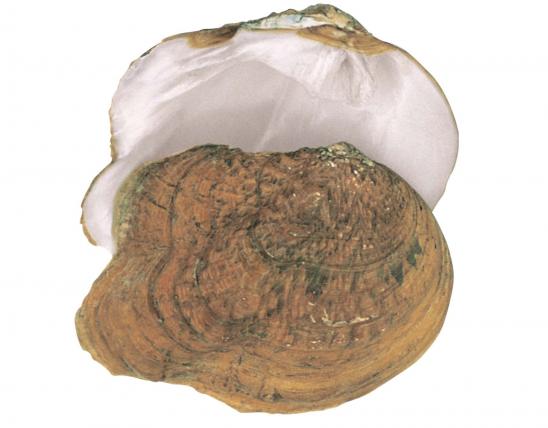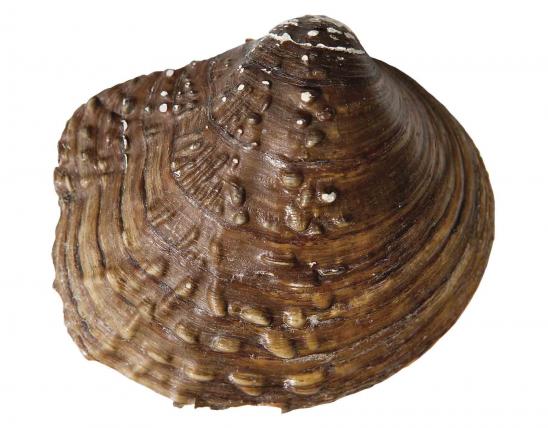
Shell is thick anteriorly to thin posteriorly; rounded to squared-off moderately inflated shell with 2 poorly defined rows of elongated knobs diverging from the umbo to the ventral margin. Umbo is rounded and raised high above the hinge line. Epidermis is generally yellowish to light brown, becoming darker with age. Inside shell beak cavity deep; pseudocardinal teeth large, grooved and roughened; lateral teeth moderately long, grooved and slightly curved; nacre (lining) white, iridescent posteriorly.
Similar species: Pimplebacks are similar but have randomly distributed small knobs and may have a green ray from umbo to halfway down shell. Monkeyface has a distinct groove.
Adult length: 2-3 inches.

Most often found in rivers of the Lowland Region, northeast Missouri and Mississippi River; may be locally abundant.
Habitat and Conservation
Most common in large streams or rivers in firm sand and mud.
Food
Algae and fine particles of decaying organic matter; extracts nutrients and oxygen from water drawn into body cavity through a specialized gill called the incurrent siphon; sediment and undigested waste are expelled through the excurrent siphon.
Status
Vulnerable. Found only in a very few regions, but locally abundant in those areas. A Species of Conservation Concern. Relatively recently was found in the South Grand River (an Osage tributary, now inundated by the Truman Reservoir) and in the Salt River (much of which is now Mark Twain Lake), but damming destroyed their habitat in these waterways.
Life Cycle
Males release sperm directly into water. Females downstream siphon sperm into the gill chamber, where eggs are fertilized. Eggs mature into larvae (called glochidia), which discharge into the water and attach to host fish—in this species, white crappie, channel and flathead catfish, bluegill and more. The tiny mussel eventually breaks away and floats to the bottom of the stream, and the cycle repeats.
Human Connections
Mussels are excellent biological indicators of water quality because they are long-lived and relatively immobile, accumulating contaminants in water that can be scientifically analyzed. This species has been used in the cultured pearl and button-making industries.
Ecosystem Connections
Mussels act as nature's “vacuum cleaners,” filtering and cleansing polluted waters. They are also an important food source for other species in the aquatic environment.


























